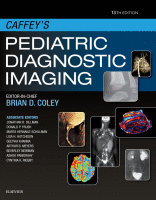Physical Address
304 North Cardinal St.
Dorchester Center, MA 02124

Brain Infections Bacterial, viral, fungal, and parasitic organisms are all causative factors in central neurologic system (CNS) infection. Brain infection manifests as encephalitis, cerebritis, and meningitis. Encephalitis refers to diffuse infection of the brain parenchyma, whereas cerebritis is due to…

Inherited Metabolic Brain Disorders Inherited metabolic brain disorders produce changes in brain metabolism and structure as a result of genetic mutations. Clinically, children with metabolic brain disorders often present with nonspecific symptoms, such as hypotonia, seizures, and developmental delay, which…

Hydrocephalus means “water in the brain.” It is the morphologic end result of many different processes related to enlarging ventricles with compression on brain parenchyma and subarachnoid spaces leading to raised intracranial pressure (ICP). The active enlargement of cerebrospinal fluid…

Advances in gene sequencing and genotype-phenotype profiling have furthered understanding of many brain malformations. Some malformations previously considered disparate in terms of gestational timing and etiology are now considered phenotypic variants of common pathways while others previously considered variants of…

A significant number of deaths and permanent neurologic disabilities occur during the first month of life, the neonatal period. During the first month of life, term infants and particularly preterm neonates are vulnerable to a wide range of adverse events…

Central nervous system (CNS) anomalies occur in 1.4 to 1.6 per 1,000 live births and 3% to 6% of still births. Whereas some anomalies can be detected as early as the first trimester (such as anencephaly), others may not develop…

Perfusion Imaging In the cerebrovascular literature, perfusion imaging refers to an all-encompassing term of various methods to measure hemodynamically derived functional parameters in the brain. In radiology, the three most common parameters that are assessed and utilized clinically are cerebral…

Physiologic Basis of Functional Magnetic Resonance Imaging Functional magnetic resonance imaging (fMRI) is based on the blood oxygen level–dependent (BOLD) contrast effect and neuronal activity–cerebrovascular flow coupling. Oxygenated blood (oxyhemoglobin) is diamagnetic, producing little susceptibility-related dephasing on magnetic resonance (MR)…

Of the advanced magnetic resonance imaging (MRI) modalities, diffusion-weighted (DW) MRI has probably garnered the most excitement in both clinical and research settings during the past decade. Standard now in nearly every neuroimaging MR protocol, DW-MRI has demonstrated substantial clinical…

Magnetic resonance spectroscopy (MRS) capability is available in most clinical magnetic resonance (MR) scanners. The additional information from MRS allows the assessment of cellular metabolism noninvasively. For the brain in particular, it has been proved that MRS of protons or…